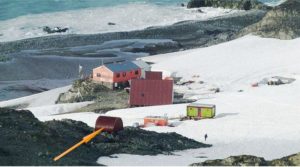By: John Landrigan [ka4rxp@gmail.com]
Plans continue to make certain that all is in readiness for my expeditionary cruise to Antarctica aboard the M/V Enderby in February 2018.
A cruise previously planned to Australia and New Zealand aboard the Holland American Line ‘”Noordam” occurred in late October. 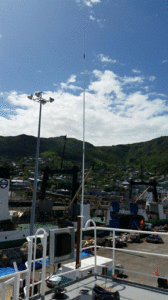 During that time I was able to visit with Rodney, the owner of Heritage Expeditions in Christchurch, New Zealand and Rowan Homes who owns Nautic Electronics.
During that time I was able to visit with Rodney, the owner of Heritage Expeditions in Christchurch, New Zealand and Rowan Homes who owns Nautic Electronics.
I gave Rowan the MFJ 998RT auto-tuner and he installed it inside of a Fiberglass Reinforced General Purpose enclosure. This and the Pacific Aerials High Frequency SSB Vertical were then mounted on a top deck railing aboard the Enderby.
(Left) Antenna and MFJ Auto-Tuner on top deck of M/V Enderby.
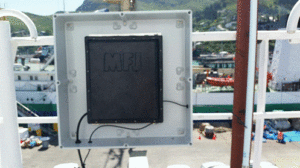
MFJ 998RT inside reinforced fiberglass enclosure (Right)
Another project was to be assured the primary radio set up – the Yaesu FT 897 and SPE 1.3KW amplifier were communicating happily with each other and the MFJ 998RT auto-tuner. This necessitated a ‘road trip’ to Starkville, Mississippi, home of MFJ where Martin Jue, Richard Stubbs, Ben, Mike and others let me set up a temporary station using a vertical antenna and testing everything out. All worked well.
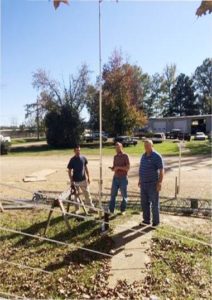
MFJ employees setting up temporary vertical so functional testing of the Yaesu 897, SPE 1.3KW amplifier and MFJ 998RT auto-tuner could be verified. (see pic to the Right)
Bolted onto an aluminum panel with padding underneath are the Yaesu FT-897 and SPE 1.3KW amplier. The amplifier can fly as in-cabin, carry on luggage due to its compact size and 22 pounds weight. The SCS Pactor Modem and West Mountain Radio RigBlaster Blue sit on top of the white Velcro mounting patches.
My visit with Rodney was most enjoyable and informative. This voyage is one that I feel especially fortunate to be going on. I’ll provide more details via the radio email Winlink program during the trip.
If propagation is more favorable in February than it was in October, I should be able to make a large number of contacts especially during Antarctica Activity Week, February 17 to 25, 2018.
As a back up, I will be using an Icom 7100. A problem shared by both the FT 897 and the IC 7100 is a lack of sockets to plug stuff into. Common to both radios is the need to have an SCS PACTOR Modem as part of the complement, and, to have minimal to none cable switching going on.
(Below:) Equipments: Yaesu FT-897 and SPE 1.3KW amplifier
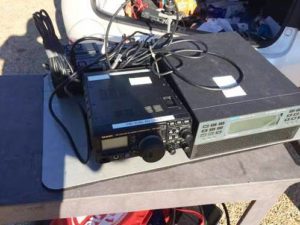 The FT 897 problem was resolved with a bhi CAT-MATE Electronic “Y” Splitter and a quick jumper move at J102 on the ACC 1/8 inch socket for ALC and PTT control to the SPE amplifier.
The FT 897 problem was resolved with a bhi CAT-MATE Electronic “Y” Splitter and a quick jumper move at J102 on the ACC 1/8 inch socket for ALC and PTT control to the SPE amplifier.
The Icom 7100 requires the use of the ACC conversion cable (OPC-599). ACC1 on the “Y” cable accepts a 9090 cable from Farallon Electronics to the SCS PACTOR Modem. The ACC2 socket will take the PNP-7D1 cable to the MFJ Ameritron ARB-704 amplifier-to-transceiver interface. The ARB-704 will output ALC and PTT to the SPE amplifier.
Of course another road trip to Starkville will be necessary to make sure all this works.
Next on the list is an after Christmas shopping trip to the Mall of America in Minneapolis, Minnesota for warm weather gear as per the suggestions of Heritage Expeditions and several other ham friends.
All I want for Christmas is an SFI above 100 for the month of February. I won’t be too dismayed if there is a good to spectacular auroral display sometime before we get to midnight sun conditions.
TNX and credit: John Landrigan KA4RXP
What else to say? John, congrats for the excellent job. You and your friends are doing really great.
All seems to be well planned, and your Antarctic adventure, I’m sure, will give you lots of satisfactions; we’ll follow you every day.
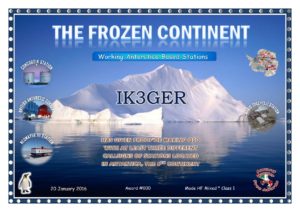 From 2013 the “The Frozen Continent” Certificate is released by IK3GER and it’s free. It will be sent via email (PDF or JPEG format file) to the Hams who request it to the Manager IK3GER: corsetti.paolo@libero.it
From 2013 the “The Frozen Continent” Certificate is released by IK3GER and it’s free. It will be sent via email (PDF or JPEG format file) to the Hams who request it to the Manager IK3GER: corsetti.paolo@libero.it 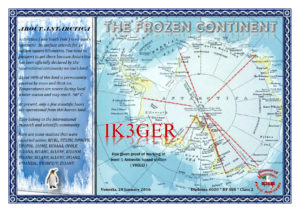 operators operating portable in Italy. QSL from San Marino (T7), SMOM (1A0) and the Vatican (HV) are not accepted for this award
operators operating portable in Italy. QSL from San Marino (T7), SMOM (1A0) and the Vatican (HV) are not accepted for this award
 From the unknown to scientific research, see how the mystery of Antarctic exploration has unfolded throughout the years.
From the unknown to scientific research, see how the mystery of Antarctic exploration has unfolded throughout the years.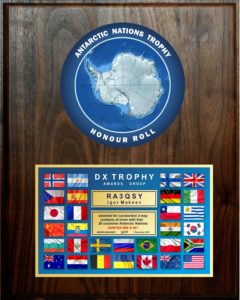
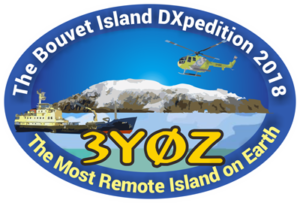 The plan is to sail for Bouvet Island on January 13, 2018. Depending on the winds and sea conditions, it will be a 10 to 12-day sail to Bouvet. The earliest arrival date will be January 23. Time to get ashore is weather dependent. As soon as the wind, sea conditions and visibility allow, the Team will begin helicopter flights to the island. Their Amateur radio license, also originally issued in 2007 with the call sign of 3YØZ, has been renewed and will be used during the DXpedition.
The plan is to sail for Bouvet Island on January 13, 2018. Depending on the winds and sea conditions, it will be a 10 to 12-day sail to Bouvet. The earliest arrival date will be January 23. Time to get ashore is weather dependent. As soon as the wind, sea conditions and visibility allow, the Team will begin helicopter flights to the island. Their Amateur radio license, also originally issued in 2007 with the call sign of 3YØZ, has been renewed and will be used during the DXpedition.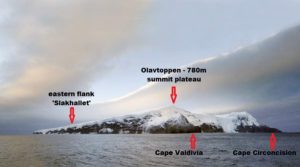 Bouvet lies at 54° 25’ South and Ø3° 22’ East. It’s the product of a volcanic eruption that last occurred in 4,000 B.C. Bouvet is 97% ice covered, and with surrounding rocks and small islands, has an area of 19 square miles, with 18.4 miles of coastline. Its location, ice, rock cliffs, high seas, harsh climate and surrounding pack ice and icebergs isolate it from human presence. Jean-Baptiste Charles Bouvet de Lozier first saw the island in 1739.
Bouvet lies at 54° 25’ South and Ø3° 22’ East. It’s the product of a volcanic eruption that last occurred in 4,000 B.C. Bouvet is 97% ice covered, and with surrounding rocks and small islands, has an area of 19 square miles, with 18.4 miles of coastline. Its location, ice, rock cliffs, high seas, harsh climate and surrounding pack ice and icebergs isolate it from human presence. Jean-Baptiste Charles Bouvet de Lozier first saw the island in 1739. 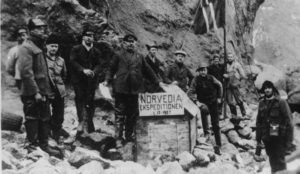 The island was not seen again until 1808. There was a disputed landing by Benjamin Morrell. But, the first documented landing was by the Norvegia expedition in 1927, which named the island Bouvetoya, and claimed it for Norway.
The island was not seen again until 1808. There was a disputed landing by Benjamin Morrell. But, the first documented landing was by the Norvegia expedition in 1927, which named the island Bouvetoya, and claimed it for Norway.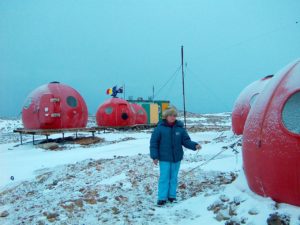 Law-Racoviță Station is placed in a rocky area about 3 kilometers from the Ingrid Christensen coast in Princess Elizabeth Land, in the Larsemann Hills of East Antarctica, at the coordinates 69°23’18.61″ South, 76°22’46.2″ East
Law-Racoviță Station is placed in a rocky area about 3 kilometers from the Ingrid Christensen coast in Princess Elizabeth Land, in the Larsemann Hills of East Antarctica, at the coordinates 69°23’18.61″ South, 76°22’46.2″ East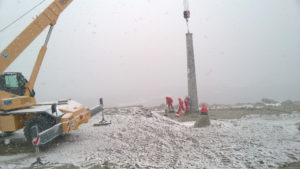 The wind is again the protagonist in Antarctica. Not only as a driving force for the climate “, but also as a driving force of the first wind farm built in the Italian Mario Zucchelli Station (WAP ITA-Ø1) at Baia Terra Nova, which since 1985 houses the scientific laboratory of PNRA, the National Program of Research in Antarctica, financed from the MIUR (Ministry of Education, University and Research) with the logistic implementation of ENEA (National Agency for New Technologies, Energy and Sustainable Economic Development) and the scientific coordination of the CNR (National Research Council).
The wind is again the protagonist in Antarctica. Not only as a driving force for the climate “, but also as a driving force of the first wind farm built in the Italian Mario Zucchelli Station (WAP ITA-Ø1) at Baia Terra Nova, which since 1985 houses the scientific laboratory of PNRA, the National Program of Research in Antarctica, financed from the MIUR (Ministry of Education, University and Research) with the logistic implementation of ENEA (National Agency for New Technologies, Energy and Sustainable Economic Development) and the scientific coordination of the CNR (National Research Council).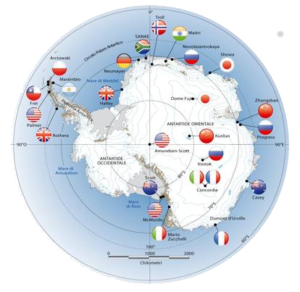 1st December 2017 – Antarctica Day falls on the anniversary of the adoption of the Antarctic Treaty, which took place on 1 December 1959.
1st December 2017 – Antarctica Day falls on the anniversary of the adoption of the Antarctic Treaty, which took place on 1 December 1959.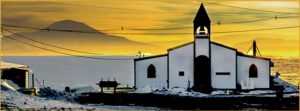 The Chapel of the Snows, a non-denominational place of worship at NSF’s McMurdo Station, Antarctica, overlooks McMurdo Sound and the Royal Society mountain range.
The Chapel of the Snows, a non-denominational place of worship at NSF’s McMurdo Station, Antarctica, overlooks McMurdo Sound and the Royal Society mountain range.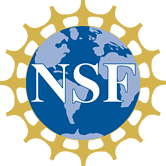
 The new base will be a 5,000-sq-m structure that can accommodate 64 people and 18 laboratories. As well as the living and working quarters, the company will build a heliport, solar panels and wind turbines that will power the base.
The new base will be a 5,000-sq-m structure that can accommodate 64 people and 18 laboratories. As well as the living and working quarters, the company will build a heliport, solar panels and wind turbines that will power the base. During that time I was able to visit with Rodney, the owner of Heritage Expeditions in Christchurch, New Zealand and Rowan Homes who owns Nautic Electronics.
During that time I was able to visit with Rodney, the owner of Heritage Expeditions in Christchurch, New Zealand and Rowan Homes who owns Nautic Electronics.

 The FT 897 problem was resolved with a bhi CAT-MATE Electronic “Y” Splitter and a quick jumper move at J102 on the ACC 1/8 inch socket for ALC and PTT control to the SPE amplifier.
The FT 897 problem was resolved with a bhi CAT-MATE Electronic “Y” Splitter and a quick jumper move at J102 on the ACC 1/8 inch socket for ALC and PTT control to the SPE amplifier.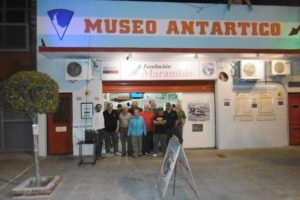 Following the Nov. 4th activation of the Antarctic Museum Marambio by the Radio CLUB QRM Belgrano hereby some datas coming from Raul Bobn Foster LU5AR, Secretary of the RC:- Se ha completado la información en la página de la actividad. Toda la información en general y el log en particular, está listo. Se hicieron más de 300 QSOs-.
Following the Nov. 4th activation of the Antarctic Museum Marambio by the Radio CLUB QRM Belgrano hereby some datas coming from Raul Bobn Foster LU5AR, Secretary of the RC:- Se ha completado la información en la página de la actividad. Toda la información en general y el log en particular, está listo. Se hicieron más de 300 QSOs-.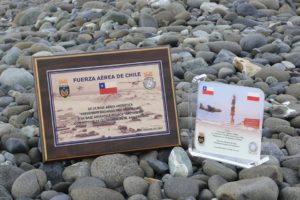 Now that the Antarctic Campaign 2017-2018 is almost open, it’s time to make presentations and get to know the neighbors.
Now that the Antarctic Campaign 2017-2018 is almost open, it’s time to make presentations and get to know the neighbors.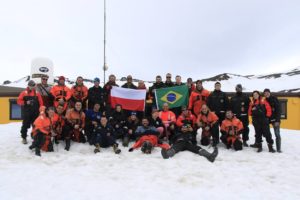
 Just to inform the readers, Antarctic lovers and followers that, it’s time to meditate about the 15th Antarctic Activity Week which will be on air from 17 through 25 Febr. 2018.
Just to inform the readers, Antarctic lovers and followers that, it’s time to meditate about the 15th Antarctic Activity Week which will be on air from 17 through 25 Febr. 2018.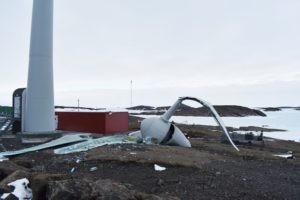 Part of a wind turbine at Australia’s Mawson research station (WAP AUS-Ø4) in Antarctica has collapsed overnight, no one was injured in the incident. The head of the turbine fell to the ground about 9 pm Mawson Station time last night.
Part of a wind turbine at Australia’s Mawson research station (WAP AUS-Ø4) in Antarctica has collapsed overnight, no one was injured in the incident. The head of the turbine fell to the ground about 9 pm Mawson Station time last night.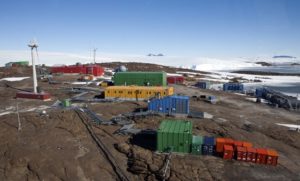 investigated.”
investigated.”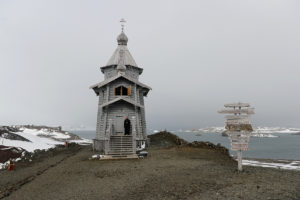 Members of the Antarctic Uruguayan ARTIGAS Base (WAP URY-Ø1), journalists and other guests visited the Trinity Church in Russia’s Bellinsghausen Polar Station (WAP RUS-Ø1) on King George Island, Antarctica, during the first week of December 2015. The priest explained to guest how the church was built as well as delivered a speech about the Orthodox and Christian churches in the twenty-first century. (see a video by cicking the gif aside)
Members of the Antarctic Uruguayan ARTIGAS Base (WAP URY-Ø1), journalists and other guests visited the Trinity Church in Russia’s Bellinsghausen Polar Station (WAP RUS-Ø1) on King George Island, Antarctica, during the first week of December 2015. The priest explained to guest how the church was built as well as delivered a speech about the Orthodox and Christian churches in the twenty-first century. (see a video by cicking the gif aside) 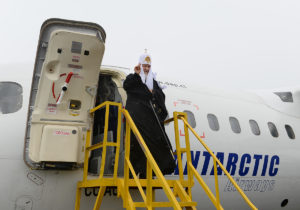
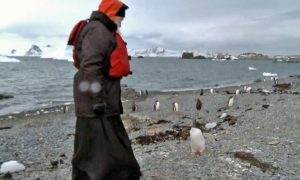
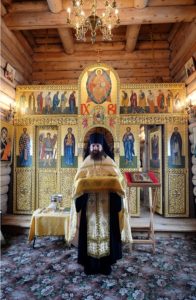

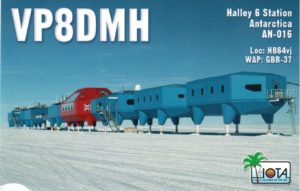 British Antarctic research station to shut for second winter as cracks in ice grow
British Antarctic research station to shut for second winter as cracks in ice grow  Novolazarevskaya Station is located at the extreme southeastern tip of the Schirmacher Oasis approximately in 80 km from the Lazarev Sea coast. An ice shelf with a slightly undulating surface resting against an ice cap extends north of the Station in the vicinity of Leningradsky Bay. From the south, there is a continental ice sheet slope. The station was opened on January 18, 1961. First constructions included service space, a living house, a mess-room and a power station, as well as glaciological, magnetic and actinometric pavilions and auxiliary space. There is a runway (1200 m x 60 m dimensions and the landing course of 114°) in the station area for ski- and wheeled aircraft located in 15 km south of the station on the ice sheet surface at the 500 m elevation above sea level.
Novolazarevskaya Station is located at the extreme southeastern tip of the Schirmacher Oasis approximately in 80 km from the Lazarev Sea coast. An ice shelf with a slightly undulating surface resting against an ice cap extends north of the Station in the vicinity of Leningradsky Bay. From the south, there is a continental ice sheet slope. The station was opened on January 18, 1961. First constructions included service space, a living house, a mess-room and a power station, as well as glaciological, magnetic and actinometric pavilions and auxiliary space. There is a runway (1200 m x 60 m dimensions and the landing course of 114°) in the station area for ski- and wheeled aircraft located in 15 km south of the station on the ice sheet surface at the 500 m elevation above sea level. If you check QRZ.com you will notice that R1ANL is reported to be a call being active from Leningradskaya Base; a good explanation is kindly given by Dominik Weiel DL5EBE (aka R3/DL5EBE).
If you check QRZ.com you will notice that R1ANL is reported to be a call being active from Leningradskaya Base; a good explanation is kindly given by Dominik Weiel DL5EBE (aka R3/DL5EBE). and I offered him to take care about the R1ANL QSL cards. A few months later I received the original handwritten R1ANL logs. I manually entered all QSOs into my computer and created ADIF files which I uploaded to LoTW, ClubLog and I also printed paper cards which are available via DL5EBE (buro and direct)-.
and I offered him to take care about the R1ANL QSL cards. A few months later I received the original handwritten R1ANL logs. I manually entered all QSOs into my computer and created ADIF files which I uploaded to LoTW, ClubLog and I also printed paper cards which are available via DL5EBE (buro and direct)-.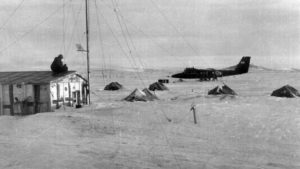 In 1969 the “Patrulla Soberania”, living in small tents, and with picks, shovels and much efforts, managed to give shape to the first airstrip in an Argentinean Antarctic Base. Thus was born the Marambio Base: gateway of large aircraft to the white continent.
In 1969 the “Patrulla Soberania”, living in small tents, and with picks, shovels and much efforts, managed to give shape to the first airstrip in an Argentinean Antarctic Base. Thus was born the Marambio Base: gateway of large aircraft to the white continent.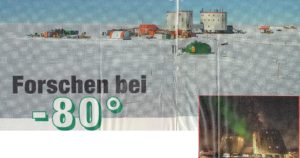 Concordia Station (aka Dome “C” Station, WAP MNB-Ø3) is 1000 kilometers from the coast, 13 flight hours from New Zealand. The next inhabited place is the Russian Antarctic Station “Vostok” (WAQP RUS-13), 600 kilometers far away.
Concordia Station (aka Dome “C” Station, WAP MNB-Ø3) is 1000 kilometers from the coast, 13 flight hours from New Zealand. The next inhabited place is the Russian Antarctic Station “Vostok” (WAQP RUS-13), 600 kilometers far away.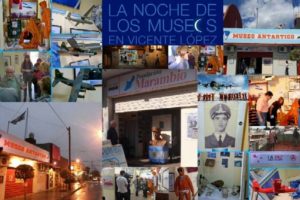 On the day of “The Night of Museums”, Hams of the “Radio Club QRM Belgrano” will be active as LU4AAO/D operating from the Marambio Antarctic Museum located in the town of Villa Adelina, Buenos Aires Province, next November 4th, 2017.
On the day of “The Night of Museums”, Hams of the “Radio Club QRM Belgrano” will be active as LU4AAO/D operating from the Marambio Antarctic Museum located in the town of Villa Adelina, Buenos Aires Province, next November 4th, 2017.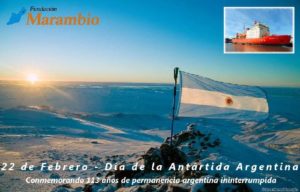 “Radio Club QRM Belgrano” has just add the entry of LU4AAO/D as WAP-286 on the activation page at:
“Radio Club QRM Belgrano” has just add the entry of LU4AAO/D as WAP-286 on the activation page at: 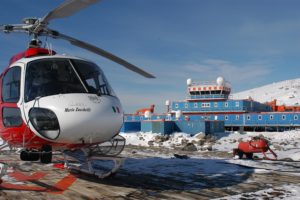
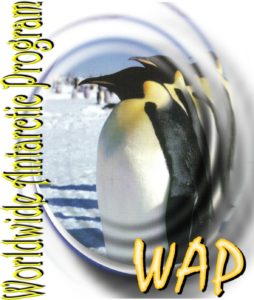 WAPonline is the only Antarctic site dedicated especially to the Hams worldwide, but also a way to increase the interest around Antarctic Continent and its related matters; to give students and chasers, the opportunity to share our passion, with the aim to stay close to the researchers and personnel who are spending their time away from home and families.
WAPonline is the only Antarctic site dedicated especially to the Hams worldwide, but also a way to increase the interest around Antarctic Continent and its related matters; to give students and chasers, the opportunity to share our passion, with the aim to stay close to the researchers and personnel who are spending their time away from home and families.
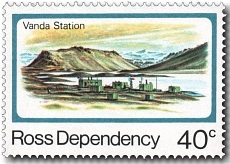 Vanda Station was an Antarctic Research Base in the western highlands (Victoria Land) of the Ross Dependency, specifically on the shore of Lake Vanda, at the mouth of Onyx River, in the Wright Valley. The four original station buildings were constructed in the summers of 1967–1968 and 1968–1969, just prior to the first winter-over by a five-man team from January to October 1969.
Vanda Station was an Antarctic Research Base in the western highlands (Victoria Land) of the Ross Dependency, specifically on the shore of Lake Vanda, at the mouth of Onyx River, in the Wright Valley. The four original station buildings were constructed in the summers of 1967–1968 and 1968–1969, just prior to the first winter-over by a five-man team from January to October 1969.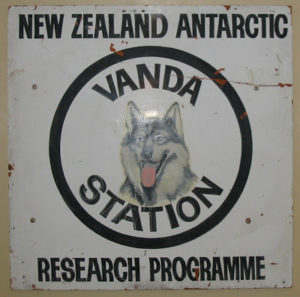
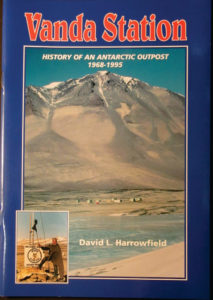 including excavations, the erection of buildings, disturbances caused by vehicle movements, the storage of consumables, waste disposal, and accidental spills, led to the effort to remove the station.
including excavations, the erection of buildings, disturbances caused by vehicle movements, the storage of consumables, waste disposal, and accidental spills, led to the effort to remove the station.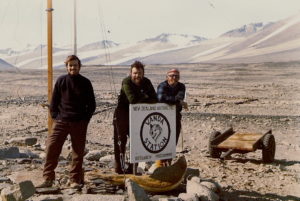
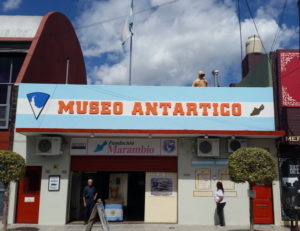 One of the most important Argentine Antarctic Museum did open its doors on the occasion of the Anniversary of Marambio Base foundation .
One of the most important Argentine Antarctic Museum did open its doors on the occasion of the Anniversary of Marambio Base foundation .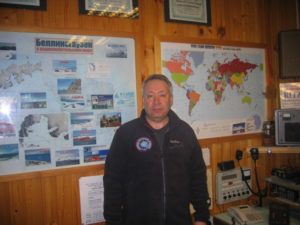 Alex Ushakov, UA1OJL (picture aside) is actually operating as RI1ANO. He will be there till march 2018 from the Russian Bellingshausen Station (WAP RUS-Ø1) and he’s supposed to be back home by April 2018.
Alex Ushakov, UA1OJL (picture aside) is actually operating as RI1ANO. He will be there till march 2018 from the Russian Bellingshausen Station (WAP RUS-Ø1) and he’s supposed to be back home by April 2018.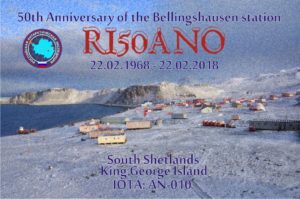
 As global warming reshapes the Arctic and Antarctic, a new designed Museum like a giant iceberg, dedicated to the Poles has been opened last march 2017. The Museum built by the son of a renowned French explorer aims to show “the beauty of polar landscapes” and illustrate the consequences of climate change. The new museum dedicated entirely to the Arctic and the Antarctic has opened in Prémanon, France.
As global warming reshapes the Arctic and Antarctic, a new designed Museum like a giant iceberg, dedicated to the Poles has been opened last march 2017. The Museum built by the son of a renowned French explorer aims to show “the beauty of polar landscapes” and illustrate the consequences of climate change. The new museum dedicated entirely to the Arctic and the Antarctic has opened in Prémanon, France. Finally we did find a time to upload another batch of Antarctic QSLs into the WAP Antarctic QSL Gallery. Some of the cards are Old and rare, some are New to confirm last activities and new callsigns showed up recently from Antarctica.
Finally we did find a time to upload another batch of Antarctic QSLs into the WAP Antarctic QSL Gallery. Some of the cards are Old and rare, some are New to confirm last activities and new callsigns showed up recently from Antarctica.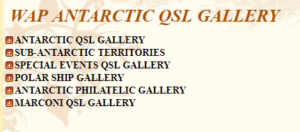 Enter the page by clicking WAP Antarctic QSL Gallery on the main page, then click on enter. Now you are on the Gallery; always remember to click the red square with a ”+” inside and you will open the Country list, one county by one and you can see all the cards loaded- There are several galleries on the Album:
Enter the page by clicking WAP Antarctic QSL Gallery on the main page, then click on enter. Now you are on the Gallery; always remember to click the red square with a ”+” inside and you will open the Country list, one county by one and you can see all the cards loaded- There are several galleries on the Album: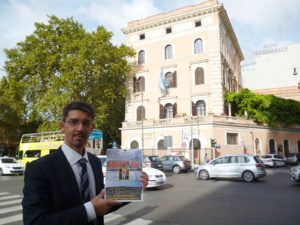 Last 24 & 25 sept. Prof Ph D Julius Fabbri went to MAECI (Ministry of Foreign Affairs and International Cooperation) in Rome for a second time, to discuss the progress of its IPSSIA Project.
Last 24 & 25 sept. Prof Ph D Julius Fabbri went to MAECI (Ministry of Foreign Affairs and International Cooperation) in Rome for a second time, to discuss the progress of its IPSSIA Project. .
.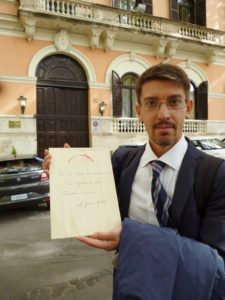
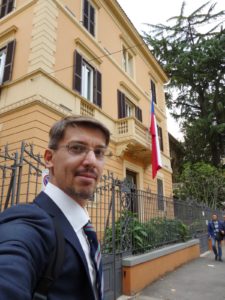 An envelope has been delivered “own hands” to Tomas Ferrari‘s new Argentina ambassador in Italy. –Open Argentina to the world’ – was the choice of Ferrari when he was nominated as Argentina’s representative to Rome, and this is certainly a good wish.
An envelope has been delivered “own hands” to Tomas Ferrari‘s new Argentina ambassador in Italy. –Open Argentina to the world’ – was the choice of Ferrari when he was nominated as Argentina’s representative to Rome, and this is certainly a good wish.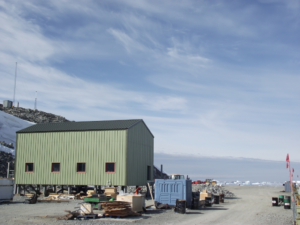
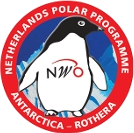 opened the first Dutch Laboratory in Antarctica and it has been placed near the British Rothera Research Station.
opened the first Dutch Laboratory in Antarctica and it has been placed near the British Rothera Research Station.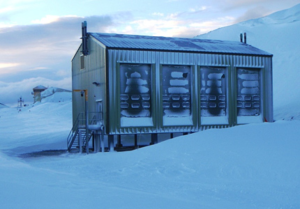 and climate change on the Antarctic Peninsula, study the influence of glacier melt water on marine microbial communities in Ryder Bay and Greenhouse gases.
and climate change on the Antarctic Peninsula, study the influence of glacier melt water on marine microbial communities in Ryder Bay and Greenhouse gases.
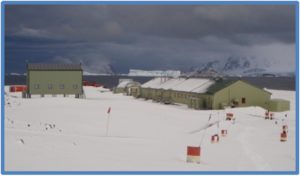
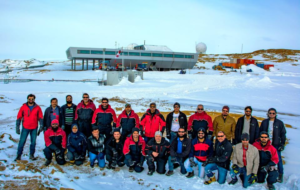 The 36th ISEA Team (Indian Scientific Expedition to Antarctica) at Bharati Station is almost at the end of its overwintering task, after a successful winter at 69° 24’ 28” South, 76° 11’ 14” East.
The 36th ISEA Team (Indian Scientific Expedition to Antarctica) at Bharati Station is almost at the end of its overwintering task, after a successful winter at 69° 24’ 28” South, 76° 11’ 14” East. but still no Europeans on his log.
but still no Europeans on his log. Base A now welcomes visitors to the site every Austral summer, in order to promote the work of the UKAHT on the Peninsula and in the UK and to give visitors a taste of base life from the early days of British occupation.
Base A now welcomes visitors to the site every Austral summer, in order to promote the work of the UKAHT on the Peninsula and in the UK and to give visitors a taste of base life from the early days of British occupation. In the photos you can see the three buildings at Port Lockroy: Bransfield House, the Boat Shed and the Nissen Hut. In the distance you can also see the anemometer tower as well as the antenna mast (in 1957 Port Lockroy used to have eight antenna masts which were used for high frequency radio communication).
In the photos you can see the three buildings at Port Lockroy: Bransfield House, the Boat Shed and the Nissen Hut. In the distance you can also see the anemometer tower as well as the antenna mast (in 1957 Port Lockroy used to have eight antenna masts which were used for high frequency radio communication). In a first for the Australian Antarctic Program, nine tonnes of cargo was parachuted from the back of a Royal Australian Airforce C-17A Globemaster III and on to the sea ice near Davis Research Station (WAP AUS-Ø3) on Sept.20-2017
In a first for the Australian Antarctic Program, nine tonnes of cargo was parachuted from the back of a Royal Australian Airforce C-17A Globemaster III and on to the sea ice near Davis Research Station (WAP AUS-Ø3) on Sept.20-2017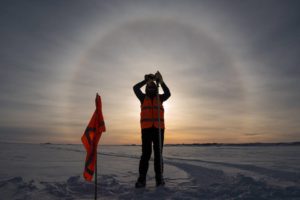 The pallets were ripped by the Australian Army’s 176 Air Dispatch Squadron.
The pallets were ripped by the Australian Army’s 176 Air Dispatch Squadron.
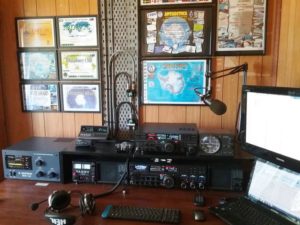
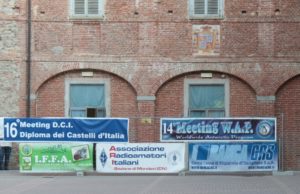 Great time this morning at the 14th WAP Meeting
Great time this morning at the 14th WAP Meeting 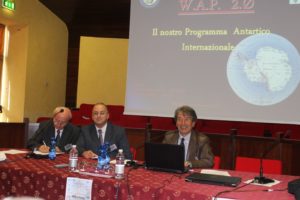
 Authorities present: Luca Robaldo,
Authorities present: Luca Robaldo, 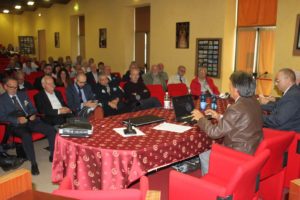
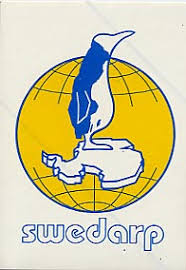 Kirvanveggen Camp is listed on our WAP-WADA Directory and it was activated by Radio amateur (Callsign 7S8AAA) in the 90ties.
Kirvanveggen Camp is listed on our WAP-WADA Directory and it was activated by Radio amateur (Callsign 7S8AAA) in the 90ties.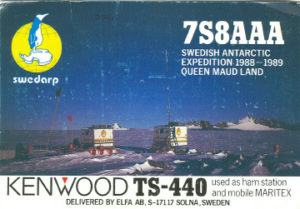
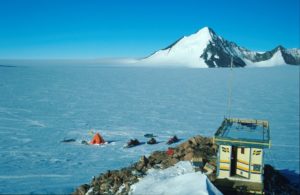 Just few notes about SVEA (WAP SVE-Ø2)
Just few notes about SVEA (WAP SVE-Ø2)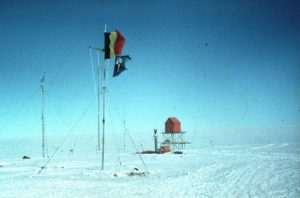 The third International Polar Year of 1958-1959 heralded the second important phase of the Belgian presence in Antarctica. This year was also known as the International Geophysical Year (IGY), in which not less than sixty-four nations signalled their commitment to study the physical characteristics of the earth.
The third International Polar Year of 1958-1959 heralded the second important phase of the Belgian presence in Antarctica. This year was also known as the International Geophysical Year (IGY), in which not less than sixty-four nations signalled their commitment to study the physical characteristics of the earth.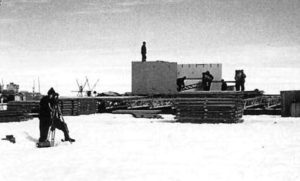 he Russians set up their Vostok Base at its least accessible point, the middle of the East-Antarctic icecap.
he Russians set up their Vostok Base at its least accessible point, the middle of the East-Antarctic icecap.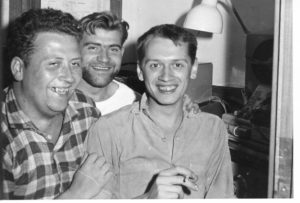 ase has been reconstructed in 1964 and closed in February 1967.
ase has been reconstructed in 1964 and closed in February 1967.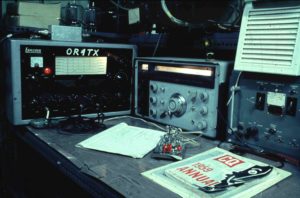 were: OR4KR, OR4OR, OR4RW, OR4TX, OR4TZ, OR4VN and OR5RK).
were: OR4KR, OR4OR, OR4RW, OR4TX, OR4TZ, OR4VN and OR5RK).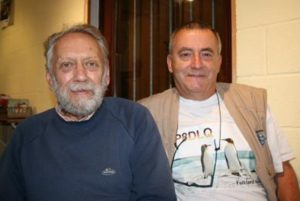 Our good friend Ghis ON5NT, went to see ON4TX/OR4TX personally at his Radioclub in Waterloo, near Brussels and Roger was extremely kind to give him the reminds that are part of his life. Pictures are from the 1960 Belgian expedition. (pic on the right: Roger ON4TX and Ghis ON5NT)
Our good friend Ghis ON5NT, went to see ON4TX/OR4TX personally at his Radioclub in Waterloo, near Brussels and Roger was extremely kind to give him the reminds that are part of his life. Pictures are from the 1960 Belgian expedition. (pic on the right: Roger ON4TX and Ghis ON5NT)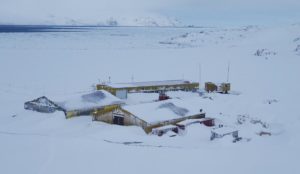 On the last 3 weeks Sebastian Gleich, SQ1SGB has been reported active from the Polish Antarctic Station Henryk Arctowski (WAP POL-Ø1) as HFØARC on 20 & 40 mts.
On the last 3 weeks Sebastian Gleich, SQ1SGB has been reported active from the Polish Antarctic Station Henryk Arctowski (WAP POL-Ø1) as HFØARC on 20 & 40 mts.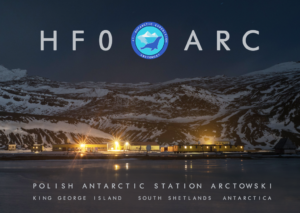
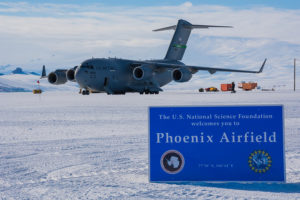 snow runway (WAP USA-NEW) has replaced Pegasus Field (WAP USA-42). This runway is capable of handling wheeled aircraft, that have included to date: Lockheed C-5 Galaxy, Lockheed C-141 Starlifter, Boeing C-17 Globemaster III, Lockheed C-130 Hercules and Lockheed P-3 Orion.
snow runway (WAP USA-NEW) has replaced Pegasus Field (WAP USA-42). This runway is capable of handling wheeled aircraft, that have included to date: Lockheed C-5 Galaxy, Lockheed C-141 Starlifter, Boeing C-17 Globemaster III, Lockheed C-130 Hercules and Lockheed P-3 Orion.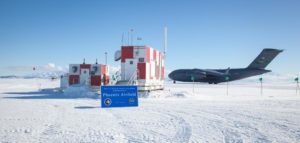 Ex Pegasus Field Runway (ICAO: NZPG) WAP USA-42
Ex Pegasus Field Runway (ICAO: NZPG) WAP USA-42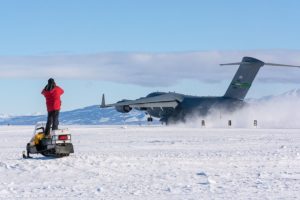 promise…it was developed originally as a “blue ice” runway (meaning that it consisted of long-term ice that was neither accumulating nor ablating). That condition is more actually applied to colder land-based inland locations such as Patriot Hills, rather than a warmer location on shelf ice.
promise…it was developed originally as a “blue ice” runway (meaning that it consisted of long-term ice that was neither accumulating nor ablating). That condition is more actually applied to colder land-based inland locations such as Patriot Hills, rather than a warmer location on shelf ice.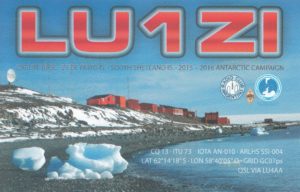 Carlini is a permanent Antarctic Scientific Station, located at 25 de Mayo Is. (aka King George Is.), in the South Shetland Islands. It is operated and administrated by the National Antarctic Division (DNA) of the Foreing Affairs Ministry of Argentina.
Carlini is a permanent Antarctic Scientific Station, located at 25 de Mayo Is. (aka King George Is.), in the South Shetland Islands. It is operated and administrated by the National Antarctic Division (DNA) of the Foreing Affairs Ministry of Argentina.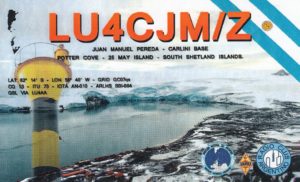
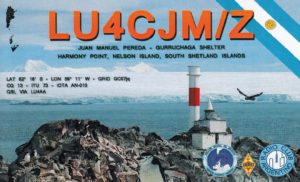 Francisco de Gurruchaga Antarctic Refuge (62°14′ 03″ South, 59°10′ 02″ West) built on Dec. 15, 1954 is placed in Harmony Point, Nelson Island, South Shetland Island. The administration depends on the Argentinian Naval Army. Proposed by Argentina, this area was originally designated as Site of Special Scientific Interest No. 14 under Antarctic ATCM Recommendation XIII-8 (1985), because the Area is an excellent example of the maritime Antarctic communities of birds and land ecosystems present in South Shetland Islands, making possibilities to carry out long-term research programs without damage or harmful interference.
Francisco de Gurruchaga Antarctic Refuge (62°14′ 03″ South, 59°10′ 02″ West) built on Dec. 15, 1954 is placed in Harmony Point, Nelson Island, South Shetland Island. The administration depends on the Argentinian Naval Army. Proposed by Argentina, this area was originally designated as Site of Special Scientific Interest No. 14 under Antarctic ATCM Recommendation XIII-8 (1985), because the Area is an excellent example of the maritime Antarctic communities of birds and land ecosystems present in South Shetland Islands, making possibilities to carry out long-term research programs without damage or harmful interference.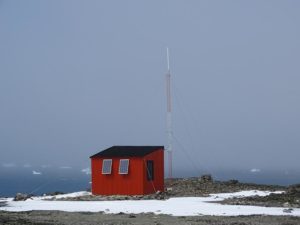 Antarctic Refuges are facilities open to all countries, to be used in emergencies or to support activities in the field. They are equipped with provisions, fuel, generators and communications equipment, accommodation facilities and other logistics.
Antarctic Refuges are facilities open to all countries, to be used in emergencies or to support activities in the field. They are equipped with provisions, fuel, generators and communications equipment, accommodation facilities and other logistics.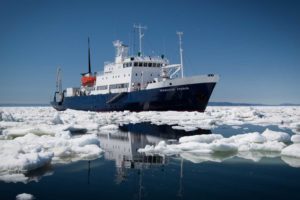 Plans appear to be melding together for a Maritime Mobile Expedition to the shores of Antarctica in February 2018.
Plans appear to be melding together for a Maritime Mobile Expedition to the shores of Antarctica in February 2018.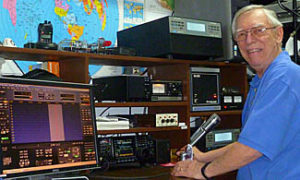
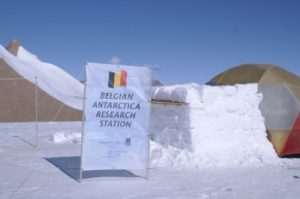 When we went across some notes, we found that, while studying a best location site to install its New Antarctic Station, a Belgian Team, went to Antarctica and set a Base Camp called Utsteinen camp which was fully operational for few months.
When we went across some notes, we found that, while studying a best location site to install its New Antarctic Station, a Belgian Team, went to Antarctica and set a Base Camp called Utsteinen camp which was fully operational for few months.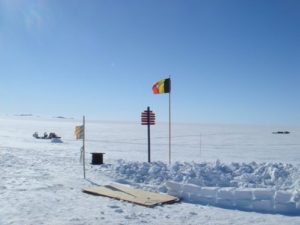
 A brief history: The Republic of Belarus joined the Antarctic Treaty in 2006 and, in that same year, approved the National program for Polar research which is called “Monitoring of Earth’s Polar areas” ensuring activity of the Arctic and Antarctic expeditions for 2007-2010 and for the period until 2015. Soon after, in 2008, it ratified the Environmental Protocol.
A brief history: The Republic of Belarus joined the Antarctic Treaty in 2006 and, in that same year, approved the National program for Polar research which is called “Monitoring of Earth’s Polar areas” ensuring activity of the Arctic and Antarctic expeditions for 2007-2010 and for the period until 2015. Soon after, in 2008, it ratified the Environmental Protocol. The main principles of activity of the Republic of Belarus in Antarctica are a system approach to the creation of the national Antarctic infrastructure and the organization of research, orientation of works for integration to international research programs, development of international cooperation in order to strengthen the Antarctic Treaty System, as well as development, consideration and recommendation to their Government of actions assisting in realization of principles and objects of the Antarctic Treaty.
The main principles of activity of the Republic of Belarus in Antarctica are a system approach to the creation of the national Antarctic infrastructure and the organization of research, orientation of works for integration to international research programs, development of international cooperation in order to strengthen the Antarctic Treaty System, as well as development, consideration and recommendation to their Government of actions assisting in realization of principles and objects of the Antarctic Treaty.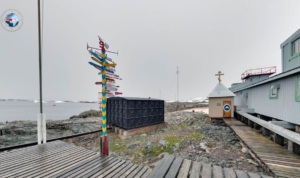 “When we send polar explorers to the South Pole we don’t ask about their confession, but every person can have a wish to be alone, to pray. Why don’t we build a church?” said Director of the National Ukrainian Antarctic Scientific Center, Valery Litvinov .
“When we send polar explorers to the South Pole we don’t ask about their confession, but every person can have a wish to be alone, to pray. Why don’t we build a church?” said Director of the National Ukrainian Antarctic Scientific Center, Valery Litvinov .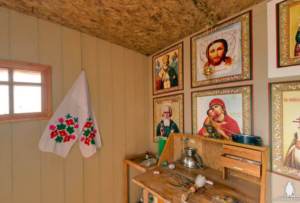
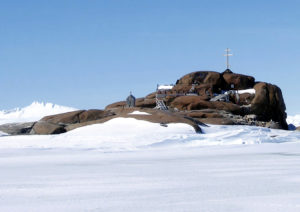 Buromskiy Island holds a Cemetery for several citizens of the Soviet Union, Czechoslovakia, German Democratic Republic and Switzerland who died in the performance of their duties while serving as members of Soviet and Russian Antarctic expeditions. It has been designated a Historic Site or Monument (HSM 9) following a proposal by Russia to the Antarctic Treaty Consultative Meeting
Buromskiy Island holds a Cemetery for several citizens of the Soviet Union, Czechoslovakia, German Democratic Republic and Switzerland who died in the performance of their duties while serving as members of Soviet and Russian Antarctic expeditions. It has been designated a Historic Site or Monument (HSM 9) following a proposal by Russia to the Antarctic Treaty Consultative Meeting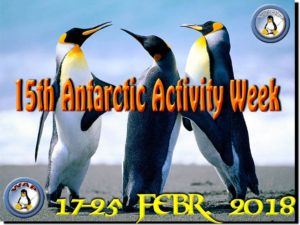 John Landrigan KA4RXP will be active as KA4RXP/MM from on board of M/V Spirit of Enderby from Febr. 8 through March 8 sailing Antarctica. The operation time falls in between the 15th Antarctic Activity Week.
John Landrigan KA4RXP will be active as KA4RXP/MM from on board of M/V Spirit of Enderby from Febr. 8 through March 8 sailing Antarctica. The operation time falls in between the 15th Antarctic Activity Week.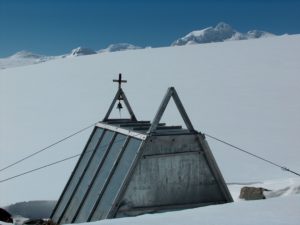 The Orthodox presence in Antarctica arises as parts of various expeditions from major Orthodox Christian Nations to the continent as there is not permanent population in Antarctica.
The Orthodox presence in Antarctica arises as parts of various expeditions from major Orthodox Christian Nations to the continent as there is not permanent population in Antarctica.
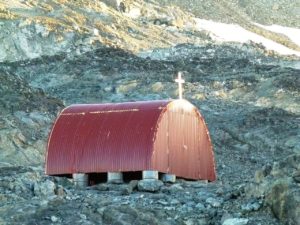 people, geologists, biologists, doctors, meteorologists, botanists and others .
people, geologists, biologists, doctors, meteorologists, botanists and others .